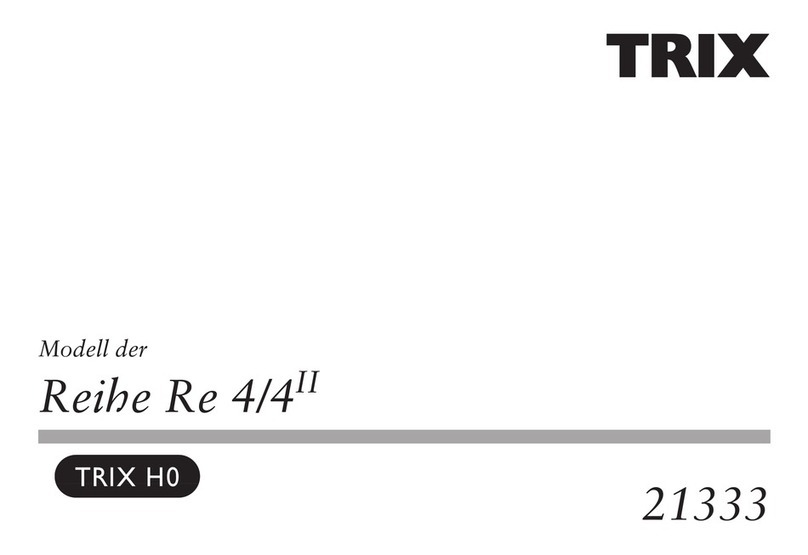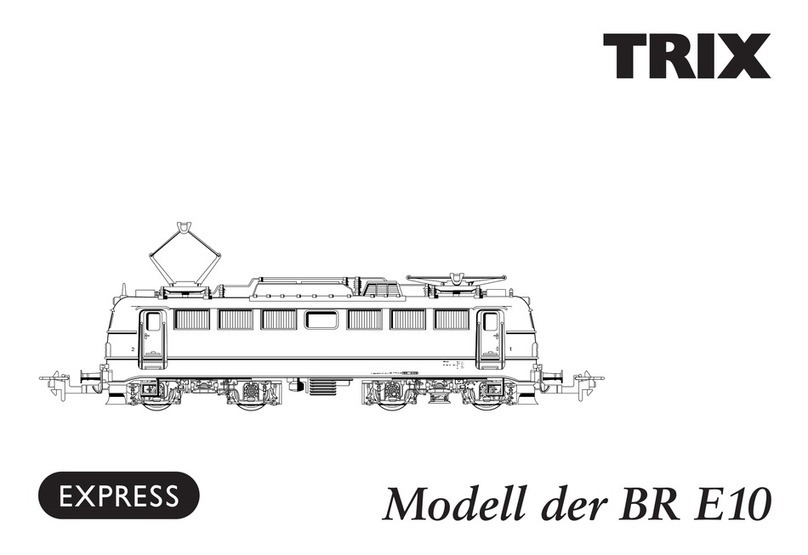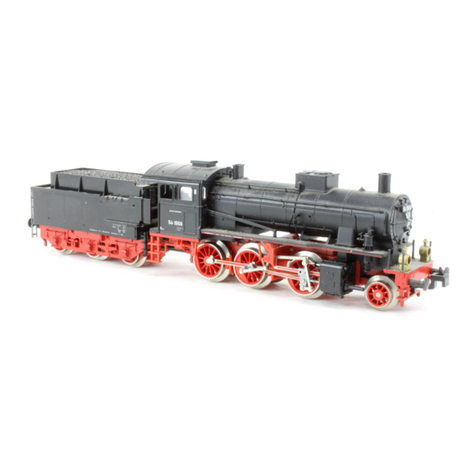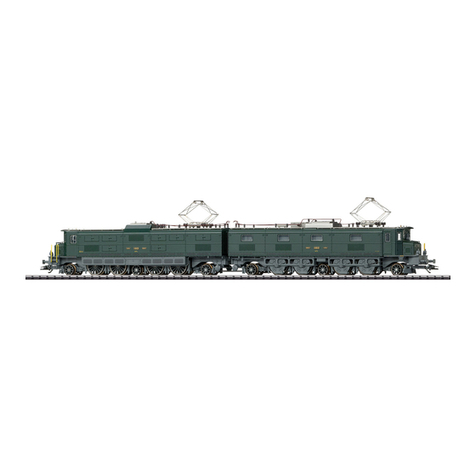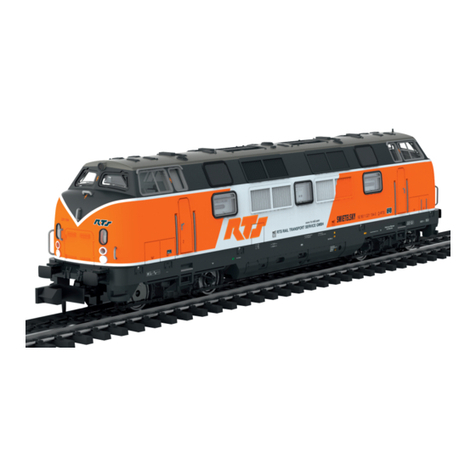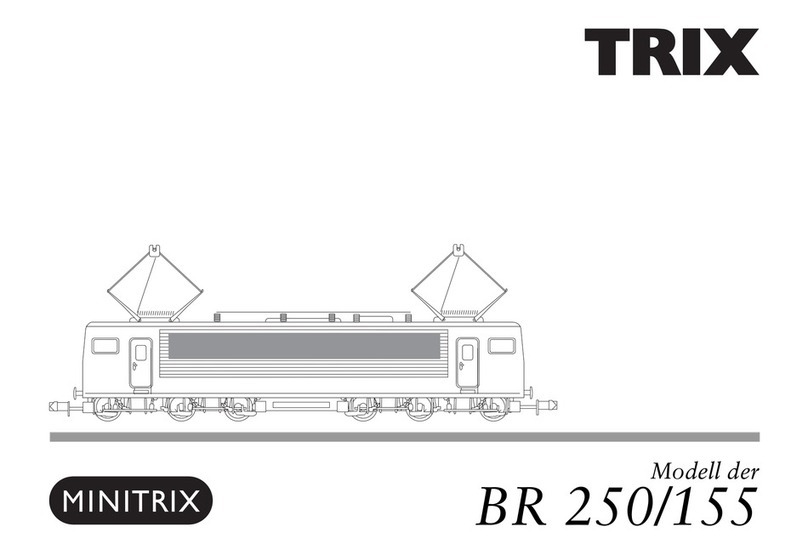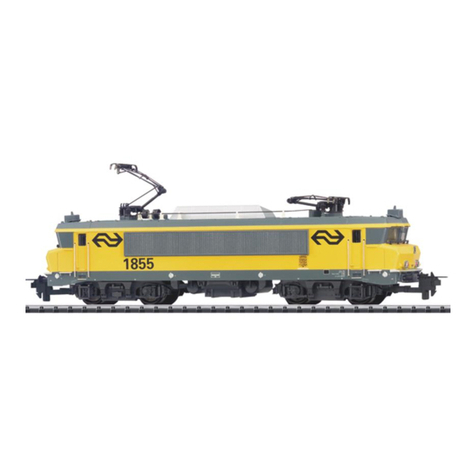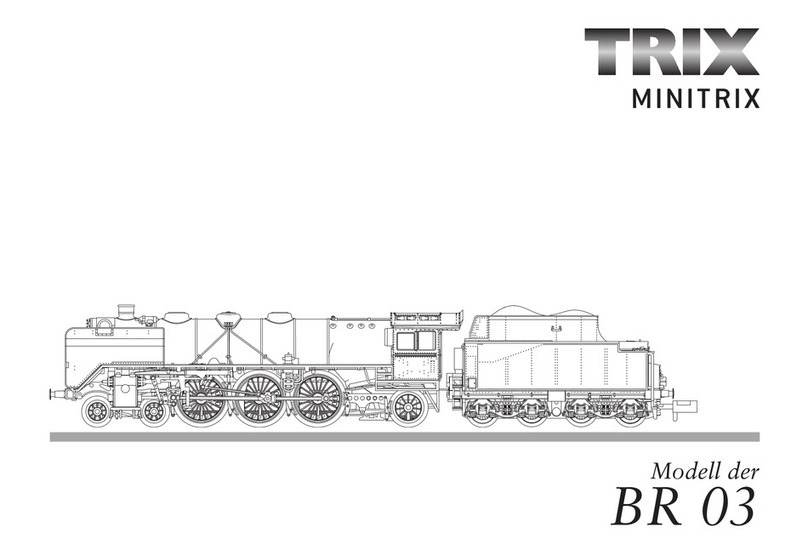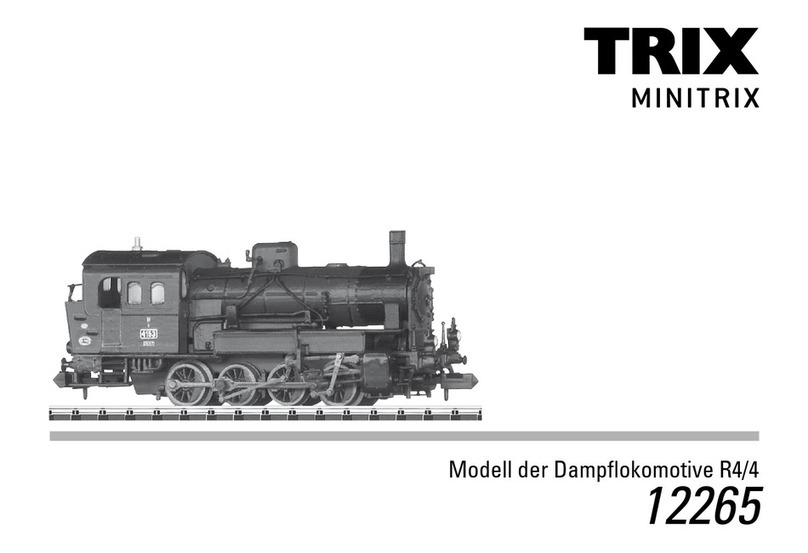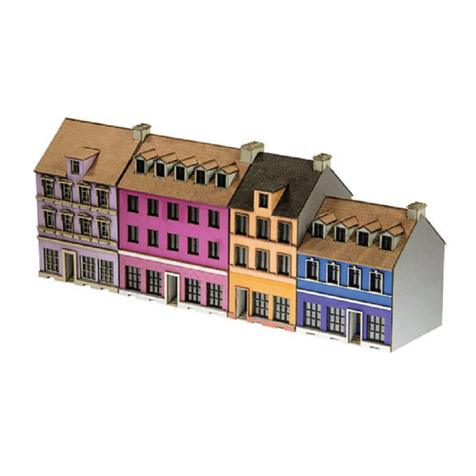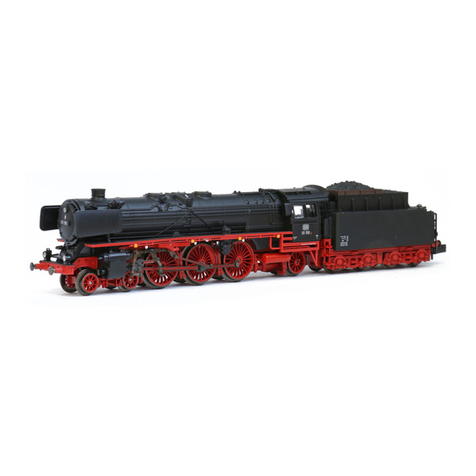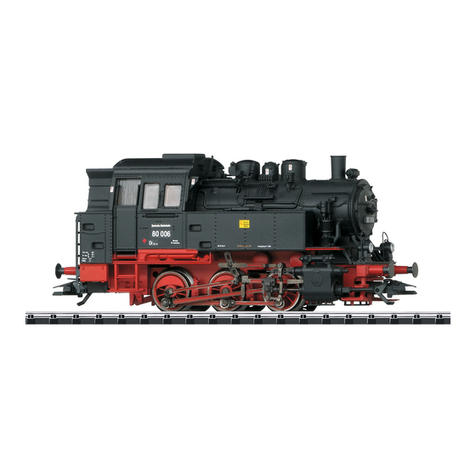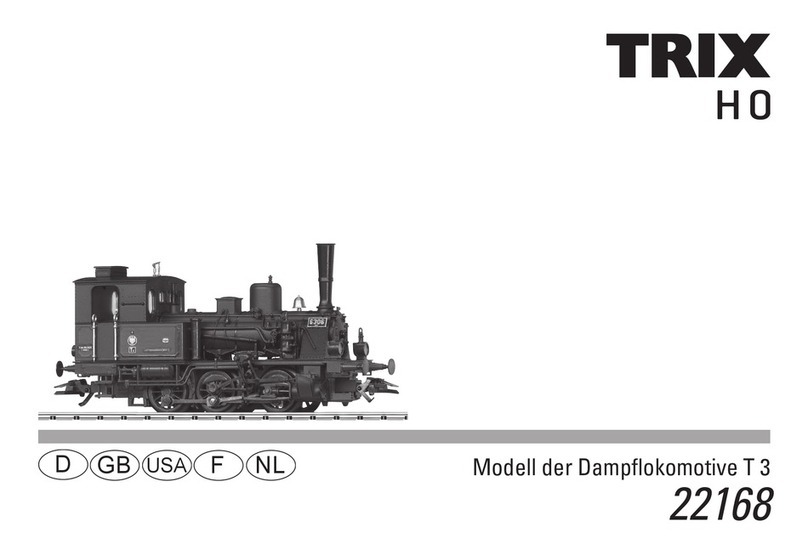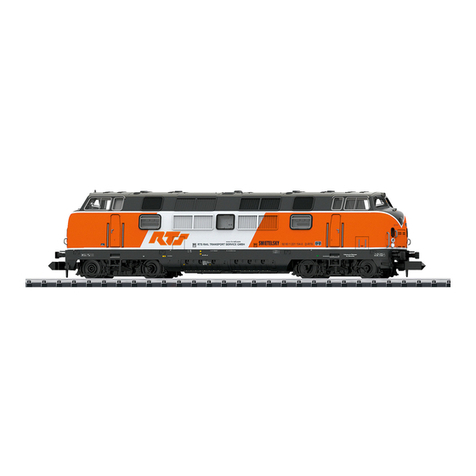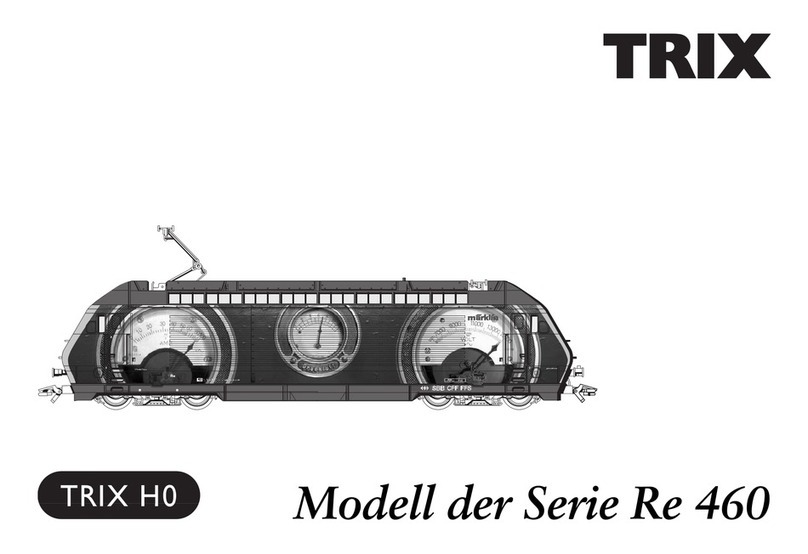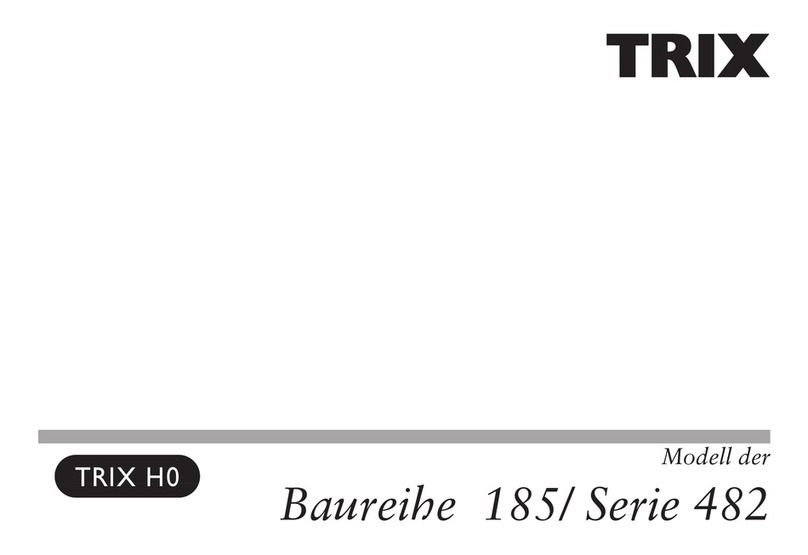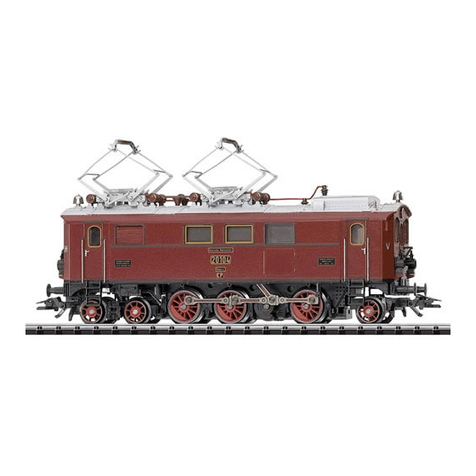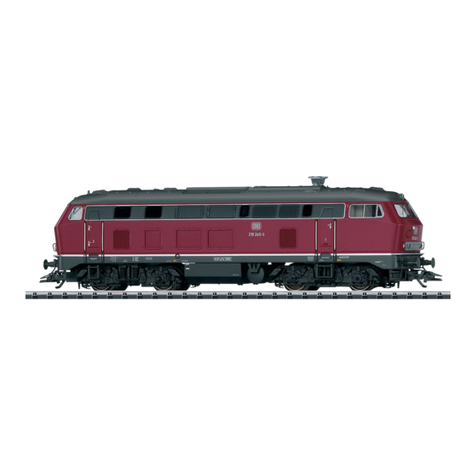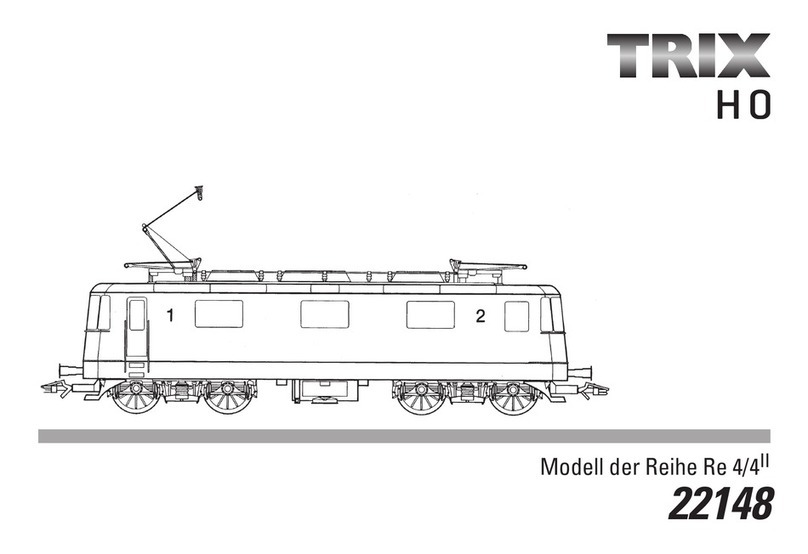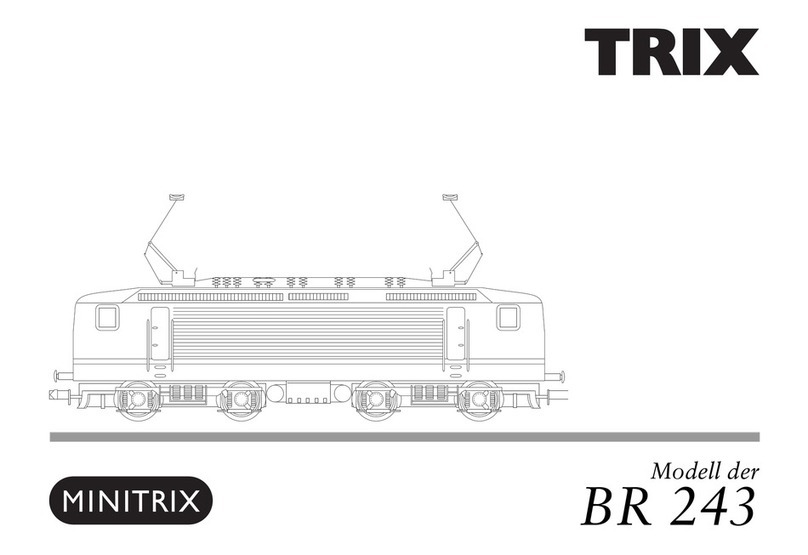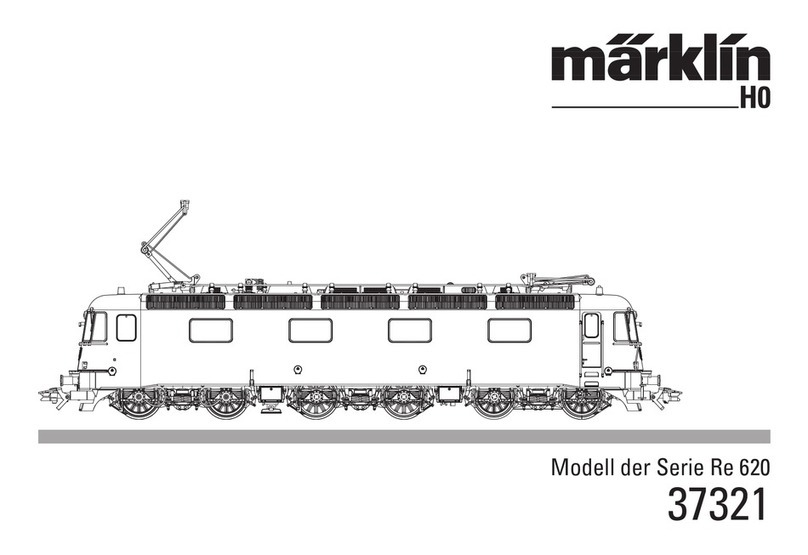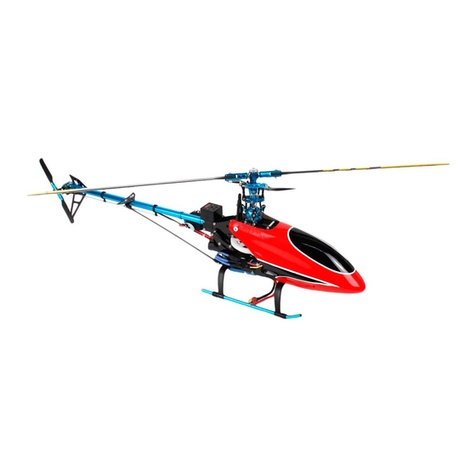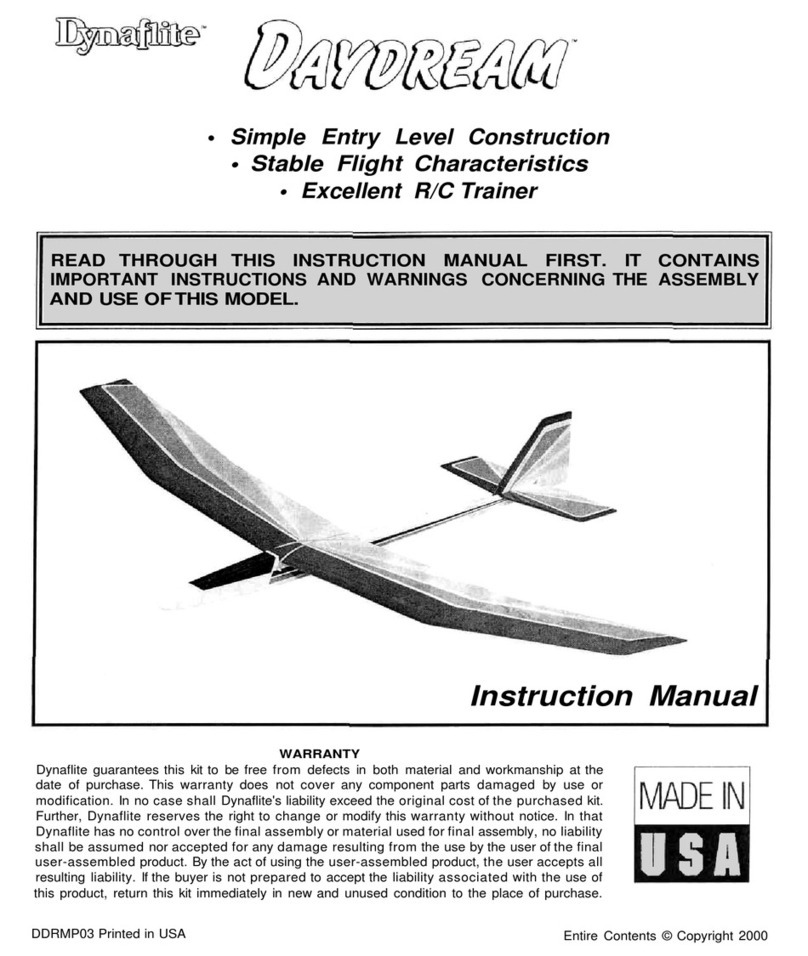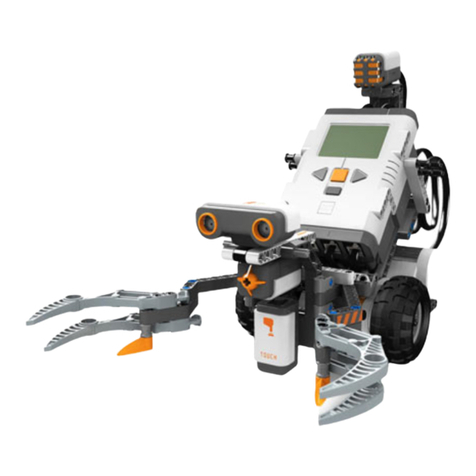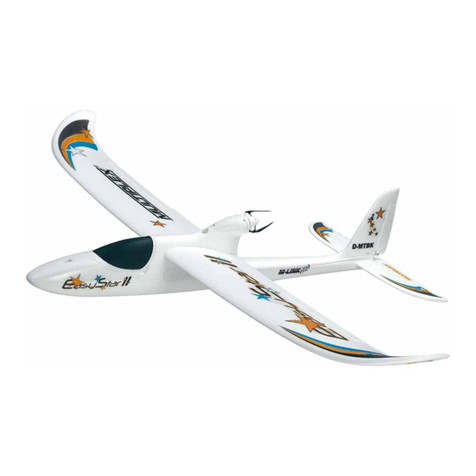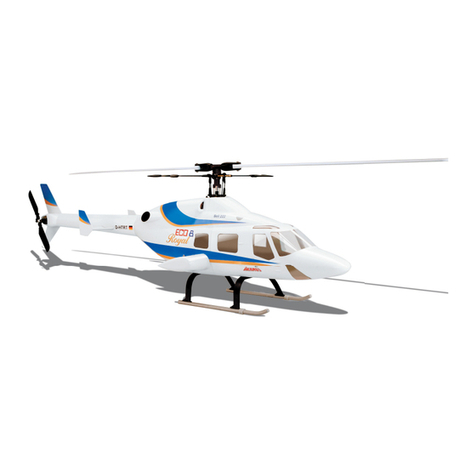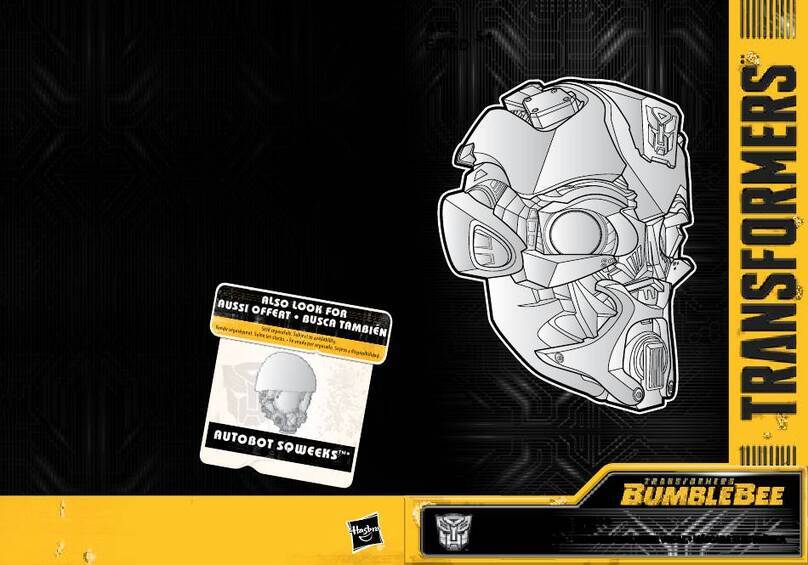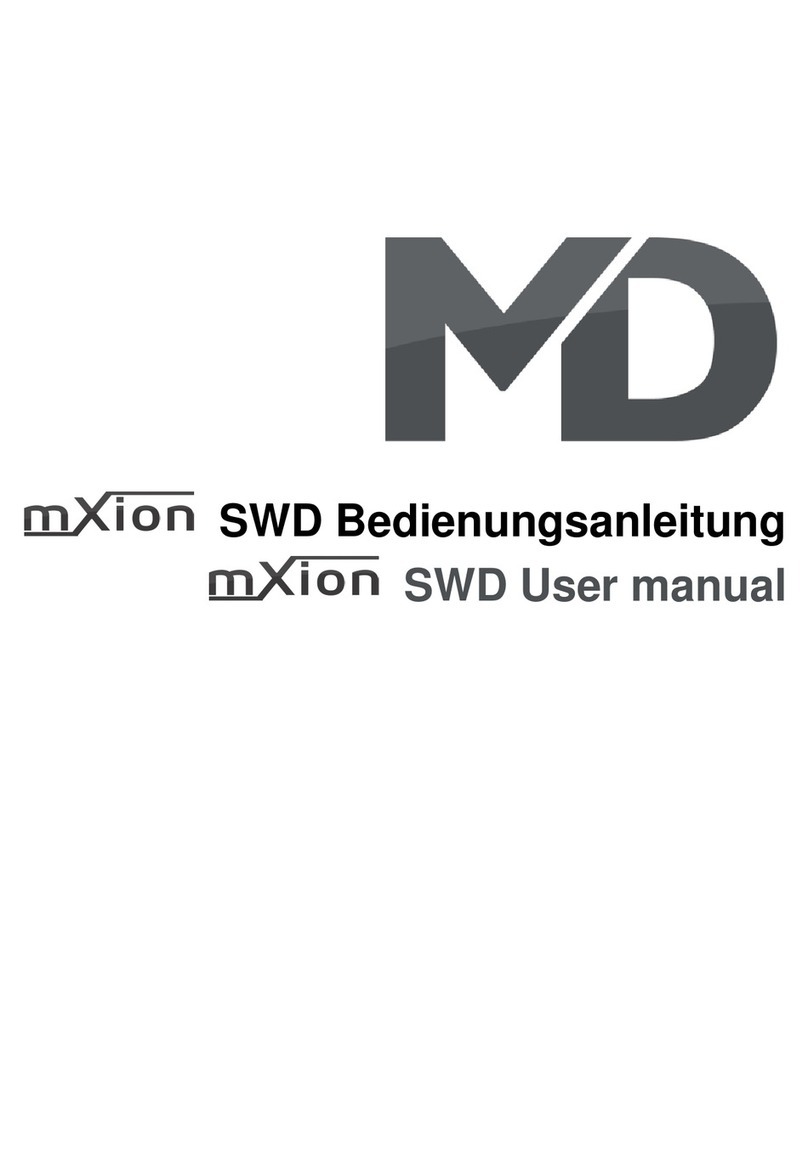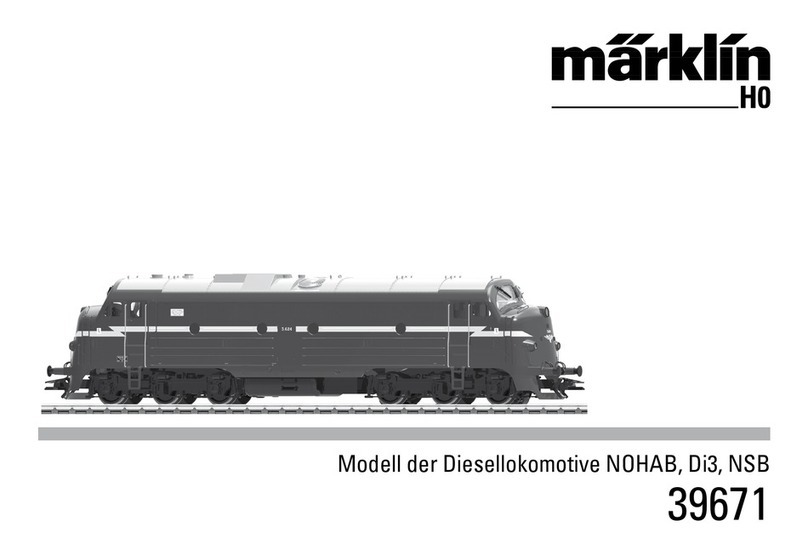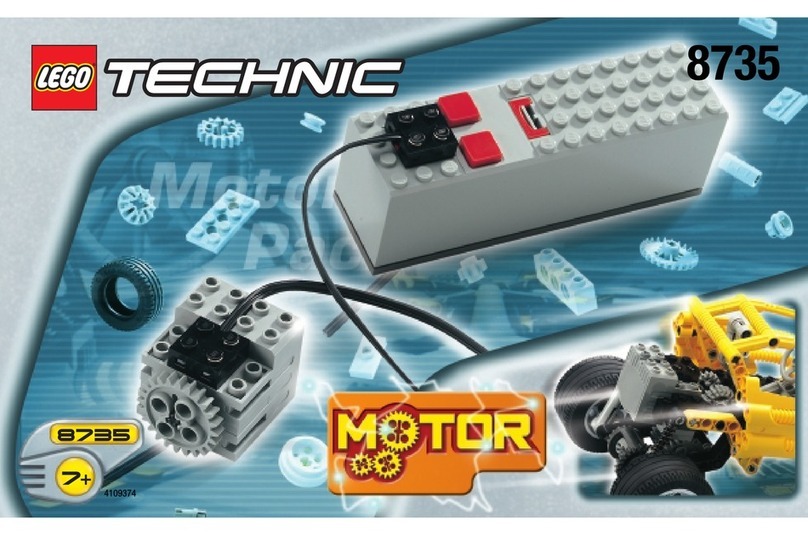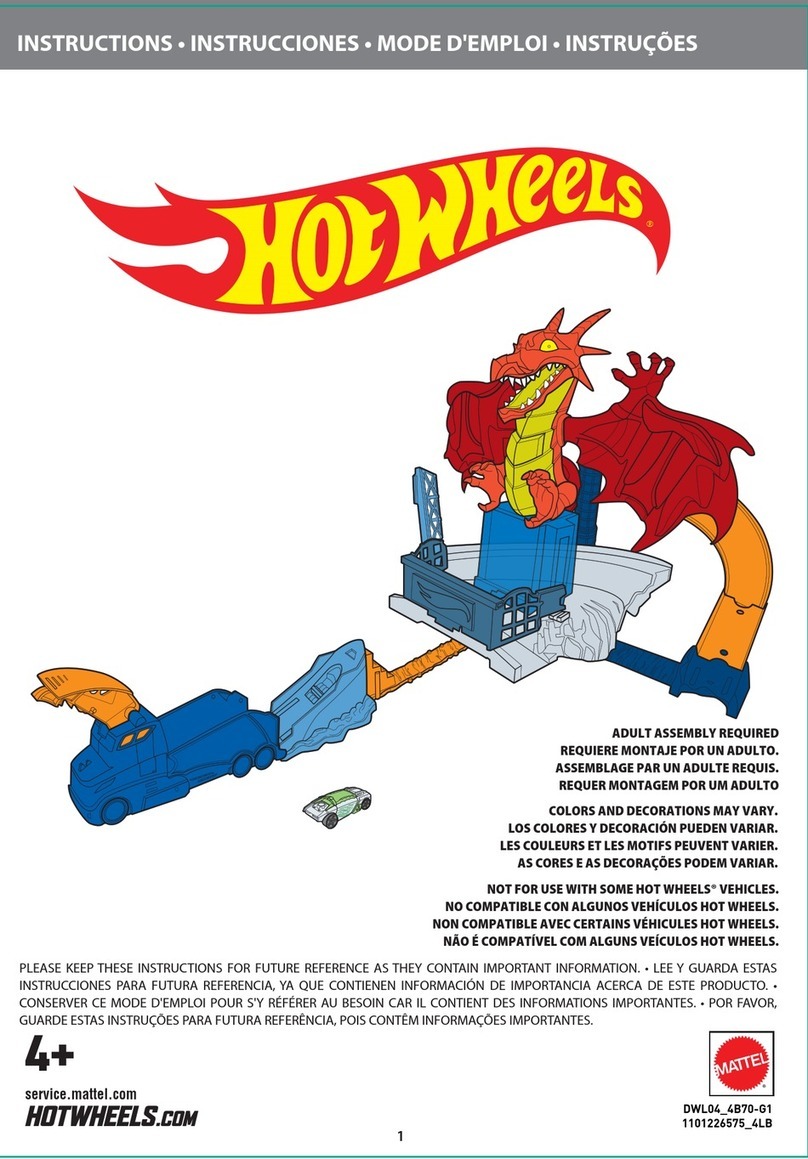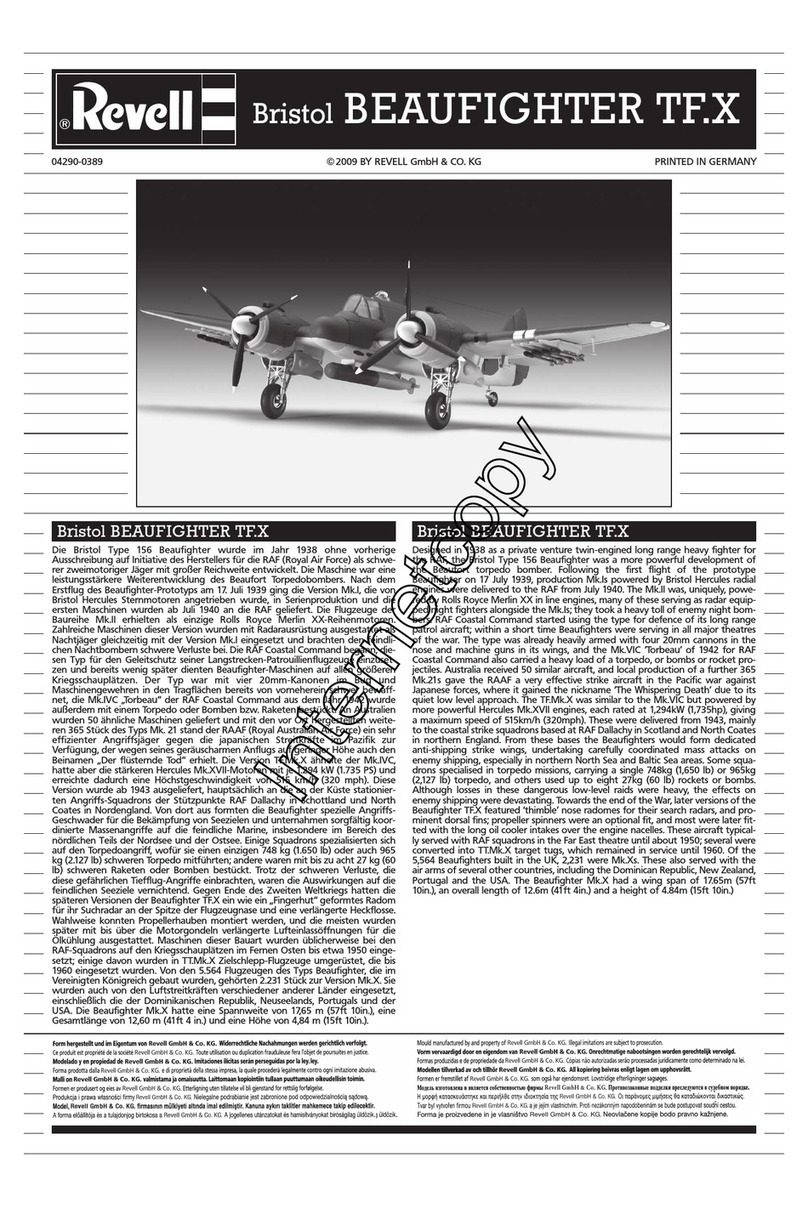9
• Built-inheadlightsthatchangeoverwiththedirectionof
travel. They can be turned on and off in digital operation.
• Minimumradiusforoperationis424mm/16“.
Multi-Protocol Operation
Analog Operation
This decoder can also be operated on analog layouts or areas
of track that are analog. The decoder recognizes alternat-
ingcurrent(DC)andautomaticallyadaptstotheanalogtrack
voltage. All functions that were set under mfx or DCC for analog
operationareactive(seeDigitalOperation).
Digital Operation
The decoders are multi-protocol decoders. These decoders can
beusedunderthefollowingdigitalprotocols:mfx,DCCorMM.
Address set at the factory: DCC 03 / MM 41
The digital protocol with the most possibilities is the highest
order digital protocol. The sequence of digital protocols in
descending order is:
Priority 1: mfx
Priority 2: DCC
Priority 3: MM
Note: Digital protocols can influence each other. For trouble-free
operation,werecommenddeactivatingthosedigitalprotocols
not needed by using CV 50. Deactivate unneeded digital proto-
cols at this CV if your controller supports this function.
Iftwoormoredigitalprotocolsarerecognizedinthetrack,
the decoder automatically takes on the highest order digital
protocol,example:mfx/DCC;thedecodertakesonthemfxdigital
protocol(seeprevioustable).
Safety Notes
• Thislocomotiveisonlytobeusedwiththeoperatingsystem
it is designed for.
• Analogmax.15voltsDC,digitalmax.22voltsAC.
• Thislocomotivemustneverbesuppliedwithpowerfrom
more than one power pack.
• Pleasemakenoteofthesafetynotesintheinstructionsfor
your operating system.
• Thefeedertrackmustbeequippedtopreventinterference
withradioandtelevisionreception,whenthelocomotiveis
to be run in conventional operation. The 611 655 interference
suppression set is to be used for this purpose. The interfe-
rence suppression set is not suitable for digital operation.
• WARNING! Sharp edges and points required for operation.
• Donotexposethemodeltodirectsunlight,extremechanges
intemperature,orhighhumidity.
• TheLEDsinthisitemcorrespondtoLaserClass1according
to Standard EN 60825-1.
Important Notes
• Theoperatinginstructionsandthepackagingareacompo-
nent part of the product and must therefore be kept as well as
transferred along with the product to others.
•
Please see your authorized Trix dealer for repairs or spare parts.
• Thewarrantycardincludedwiththisproductspeciesthe
warranty conditions.
• Disposing:www.maerklin.com/en/imprint.html
• ThefullrangeoffunctionsisonlyavailableunderDCCandmfx.
